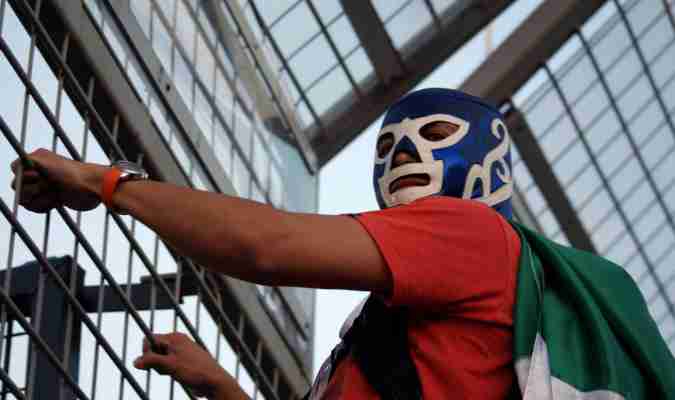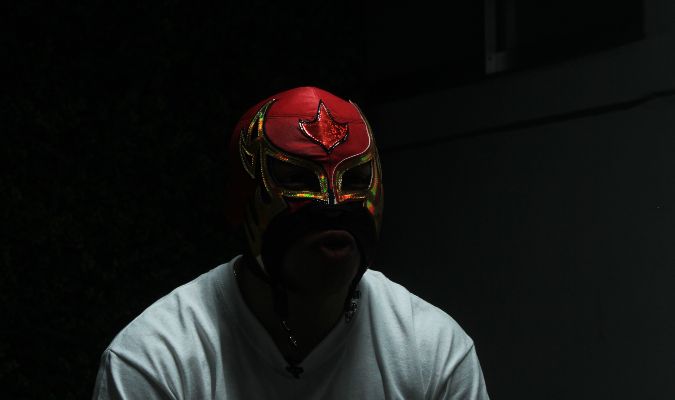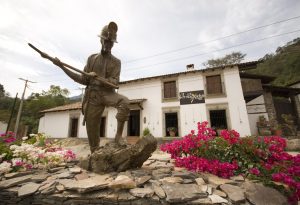Lucha libre is an icon of Mexican entertainment. Walk down any tourist market and you will undoubtedly see the famous, colorful wrestling masks on display. Catching a show while you’re in Mexico is a thrilling way to spend an evening but, before you go, first make sure to read through this beginner’s guide to lucha libre.
What is lucha libre?
Lucha libre is Mexico’s form of professional wrestling entertainment. Much like WWE, its cousin from north of the border, its participants don eye-wateringly tight clothing to engage in high flying-wrestling moves in a bid to beat their opponent.
The athletic action, however, is only half the fun. The other half is the outrageous storylines that surround the characters and the drama that goes with it. Yes, it’s all choreographed, but that doesn’t make it any less fun.
The history of lucha libre
Lucha libre was developed in Mexico towards the end of the 1800s. Its breakthrough came in 1933 when Salvador Lutteroth founded the Empresa Mexicana de Lucha Libre (now known as Consejo Mundial de Lucha Libre or CMLL).
The EMLL formalized the sport, which helped to turn the once-regional performances into a national phenomenon. Its rapidly growing popularity was then aided by the advent of the television in the 1950s, turning the luchadores (wrestlers) into national stars.

What are the rules of lucha libre?
The rules of lucha libre are very similar to those found in WWE. Luchadores will battle it out in the ring looking to pin their opponent for three seconds. Other ways to win are by keeping the opponent out of the ring for a set amount of time (normally 20 seconds) or by forcing them into submission.
Luchadores can also be disqualified from a match. This could be for several reasons including using an illegal move, hitting an opponent in the groin, or using outside help.
Forms of lucha libre fights
There are several different lucha libre fights, but the most common are one-on-one bouts. Typically, a técnico (goodie) will fight against a rudo (baddie) — it’s up to you which side you root for.
You will also see tag team matches in which a team of fighters will face against another, while battle royales will see multiple luchadores face-off in a multi-person brawl for survival.
What are the masks about?
The wrestlers’ masks have acquired an almost divine status in Mexican wrestling, acting as both a protector and giver of identity. Fighters will go to great lengths to prevent their faces being shown in public, even wearing them for interviews.
The removing of a mask is a symbolic act that can be disastrous for a fighter’s career. When tensions rise between two sworn enemies, a lucha de apuesta (fight with a wager) may take place where the loser has to unmask themselves.
Where can I watch lucha libre?
For the very best experience, head to Arena Mexico in Mexico City. Bouts normally take place on Tuesdays, Fridays, and Sundays, although you should check what’s on before you go. You will also be able to watch fights in Mexico City’s Arena Coliseo, a more intimate and older venue.
Outside of Mexico City, it’s possible to catch regional versions of lucha libre while CMLL fights also take place in Guadalajara and Puebla.
Do I need to speak Spanish to enjoy it?
Certainly not. You might want to brush up on the current storylines before you go, but even that is unnecessary. Mexican wrestling is all about the aerial antics, sequins, and rambunctious atmosphere — less about the dialogue.
Get me to a lucha libre show
Book a Mexico City vacation with Journey Mexico and we can organize a trip to the wrestling for you. What’s more, you can have a personal guide accompany you who will give you greater insight into the spectacle you are watching. Combine a trip to the wrestling with Mexico City’s other great attractions including Frida Kahlo’s Blue House.






